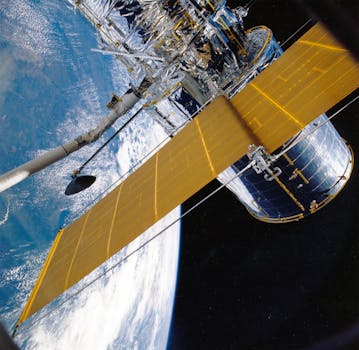The Future of Satellites: Revolutionizing Global Communication and Exploration

The Future of Satellites: Revolutionizing Global Communication and Exploration
The future of satellites is expected to bring about significant advancements in global communication, exploration, and technology. With the increasing demand for satellite-based services, the industry is witnessing a surge in innovation and investment. Future of satellites is an exciting and rapidly evolving field, with new technologies and applications being developed every day.
Advancements in Satellite Technology
One of the key drivers of the satellite industry is the advancement in technology. Satellites are becoming smaller, lighter, and more powerful, making them more efficient and cost-effective. The development of new materials and manufacturing techniques has enabled the production of smaller satellites, known as smallsats or cubesats, which can be launched at a lower cost than traditional satellites. These smallsats are being used for a variety of applications, including Earth observation, communication, and scientific research.
The use of future of satellites is also being driven by the increasing demand for satellite-based services. The growing need for global communication, navigation, and remote sensing is creating new opportunities for satellite operators and manufacturers. The development of new satellite constellations, such as OneWeb and SpaceX’s Starlink, is expected to provide high-speed internet access to remote and underserved communities around the world.
Applications of Satellites
Satellites have a wide range of applications, including communication, navigation, Earth observation, and scientific research. Communication satellites are used to provide telephone, internet, and television services to remote and underserved communities. Navigation satellites, such as GPS, are used to provide location information and timing signals to a wide range of users, including motorists, aviators, and mariners.
Earth observation satellites are used to monitor the environment, track weather patterns, and predict natural disasters. These satellites are equipped with sensors and cameras that can detect changes in the environment, such as deforestation, ocean pollution, and climate change. Scientific research satellites are used to study the Earth’s atmosphere, the Sun, and the universe. These satellites are equipped with instruments that can detect and measure various phenomena, such as cosmic rays, solar flares, and black holes.
Challenges and Opportunities
Despite the many advancements and applications of satellites, there are also challenges and opportunities that need to be addressed. One of the key challenges facing the satellite industry is the issue of space debris. The increasing number of satellites in orbit is creating a growing problem of space debris, which can pose a risk to operational satellites and other space-based assets.
Another challenge facing the satellite industry is the issue of regulatory frameworks. The lack of clear regulatory frameworks is creating uncertainty and obstacles for satellite operators and manufacturers. The development of new regulatory frameworks that can accommodate the growing demand for satellite-based services is essential for the future of the satellite industry.
However, the future of satellites also presents many opportunities for innovation and investment. The growing demand for satellite-based services is creating new opportunities for satellite operators and manufacturers. The development of new technologies and applications is expected to drive growth and investment in the satellite industry.



